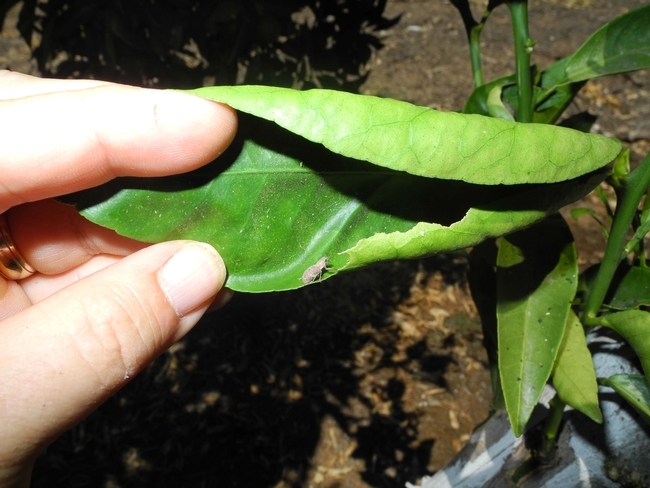
“I've never seen this happen before in the 25 years I've been working on citrus entomology,” said Beth Grafton-Cardwell, UC ANR Cooperative Extension citrus entomology specialist. “One pest control adviser who's been in the business for 50 years told me this is the first time he's seen weather conditions this extreme.”
In a normal valley winter, temperatures dip into the low 20-30s for weeks at a time. But this past winter, average daily temperatures were above the developmental threshold for many insects. Insects continued to reproduce and grow throughout the winter instead of hibernating.
“All winter long, we had fuller rose beetles emerging and laying eggs, which usually doesn't happen,” Grafton-Cardwell said. “California red scale, citricola scale, citrus peelminer and Asian citrus psyllid were active through the winter and are all requiring treatment weeks before they normally would.”
David Haviland, UC ANR Cooperative Extension entomology advisor in Kern County, said he has received numerous calls about legions of army cutworm moths.
“People are wondering why there are so many moths buzzing around their porch lights. That's nature for you,” Haviland said. “While many people might be frustrated by the moths, I like to think that there are a lot of happy birds out there with well-fed babies.”
Haviland said the farmers he works with are finding that the warmer-than-usual winter and early spring has sped up development of a wide assortment of insects, including navel orangeworm, beet armyworm and vine mealybug.
“Insects are part of a complex ecosystem. Every year, the factors change,” Haviland said. “This year, we have a very dry winter and a warm spring. In some cases, that plays to the advantage of pests. And sometimes the weather conditions are better for the beneficial insects.”
An initiative to manage endemic and invasive pests and diseases is part of UC Agriculture and Natural Resources Strategic Vision 2025.
Author: Jeannette Warnert